Showing 157–168 of 294 results
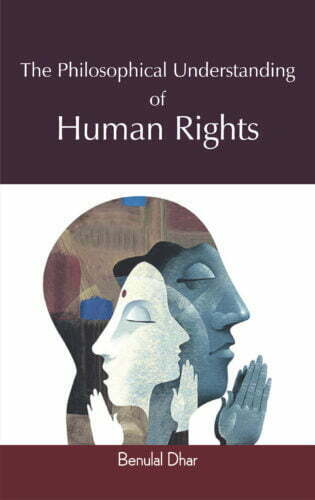
This book investigates the doctrine of natural rights and its critiques, and assesses the world-view which has shaped formulation of the theories of natural rights. It presents a clear exposition of some contemporary philosophical theories of rights developed independently of the natural rights paradigm and discusses the theories wherein the conception of rights is found to be compatible with utilitarianism.
Human rights is a topic that gets vividly and seriously debated at varied platforms, globally. The concept of human rights has a rich philosophical and theoretical tradition, and its philosophical dimension deserves proper attention. Having given an account of the origins and historical development of the idea of human rights, the book investigates the doctrine of natural rights and its critiques, and assesses the world-view that has affected its formulations.
The work also presents a clear exposition of some contemporary philosophical theories of rights developed independently of the natural rights paradigm and discusses the theories wherein the conception of rights is found to be compatible with utilitarianism. And, finally, while briefly arguing for discursive understanding of human rights based on the diversity of morals that is embedded in different cultural traditions of the world and for reconstruction of the conception of human rights in more inclusive and cross-cultural terms, the author analyses the conception of human dignity from the Vedantic perspective as a case study, which is regarded as an important underlying principle of human rights.
The volume is intended to introduce students and practitioners of human rights, and general readers to the philosophy of human rights.
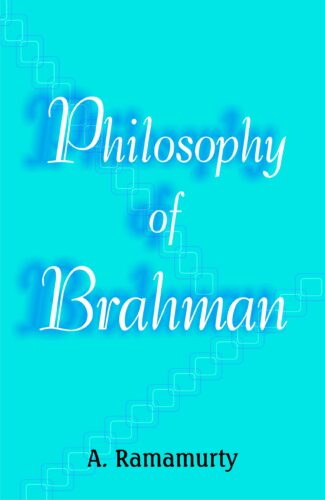
A profound work that addresses the major concern of ancient Indian metaphysical thought. Its discussion on the existence and nature of Brahman is simple and easy to understand. The book should be useful to scholars and students of Indian philosophy as well as to general readers.
This book is in one sense a critique of metaphysics usually viewed as an attempt to explain the existence of the world in terms of a reality which is regarded as the ultimate cause or source of the world, and in another sense to understand metaphysics as a profoundly significant attempt to know or understand the true or real nature of what is there, or what we all experience empirically, or the world. Most of the philosophers belonging to different schools of philosophy tried to understand the world in terms of a reality which is supposed to be the explanation of it. However, in the other approach to metaphysics which we discern in the philosophy of Shankara, and which is in tune with the basic insights of the Upanishads, a comprehensive attempt is made to know or understand the true or real nature of what we know empirically, or the world before any attempt is made to explain its existence. We therefore tried to analyse and understand critically the basic concepts involved in the ontological problem of Brahman, like the nature of the world, its causal explanation, nature and ontological status of matter, consciousness and its relation to spirit or self with a view to understanding the Advaitic insight that Brahman is the true nature of what we experience and know empirically, or the world.

The book focuses on meaning and linguistic representations, and links them to propose a representational theory of meaning. It shows that meaning as truth-conditions and as justification-conditions are equally rooted in the semantic space of language-use.
Surveying all the landmark developments in the recent philosophy of language, the book focusses on meaning and linguistic representations in its thematic effort to propose a representational theory of meaning. Meaning is the autonomous component of language: its semantic content and its essence as well. The book, thus, tries to link meaning with linguistic representations which, in themselves, not only are logico-grammatical structures, but also represent the world around us. Also attempting to reconcile the conflicting claims of the realists and the anti-realists, the author demonstrates how we have no choice between meaning as truth-conditions and meaning as justification-conditions, since both are equally rooted in the semantic space of language-use involving linguistic representations. Dr. Pradhans analyses have, at their base, his indepth, critical study of the theory of linguistic representation in Frege, Wittgenstein, Davidson, and Dummett. In sum, the book lends a forceful support to semantics and, more specially, to the autonomy of meaning. And the theory of representation, argued for here, promises to fulfil the twin theses of representationality and autonomy of meaning. It is an insightfully analytical work of immense usefulness to the scholars of philosophy concerned with linguistic representation, semantics and meaning.
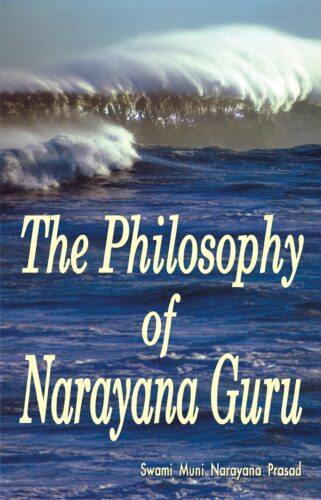
The book presents the essence of the philosophy of Narayana Guru, the noted philosopher-saint of modern India who reintroduced the essential Upanisadic content with a fresh appeal. Based on a thorough study of his works, it deals with his thought on ethics, aesthetics, religion, rituals and casteism.
Narayana Guru (1854-1928), a much-revered philosopher-saint of South India, revisualised the essential Upanisadic thought with a freshness of perspective. Further, he applied basic aspects of his Upanisadic philosophy successfully to bring about radical social transformations. This book deals with his philosophy as discussed in his major work, Atmopadesa Satakam (One Hundred Verses of Self Instruction) but incorporates views and ideas from his other works as well. The work focuses on Narayana Gurus philosophic thought dealing with the meaning of Vedanta, the way to seek Reality, the role of the individual in life, and karma, maya, the atma’s (self-)manifestation and sat-cit-ananda as the definition of the atma or Brahman and as the final goal. The various concepts are explained in relation to one another and from the viewpoint of achieving the final goal in life to present a unified thought construct that forms the core of Narayana Gurus philosophy. It also takes up the application of his Upanisadic philosophy in different disciplines like ethics and aesthetics and in practice of religion, temple-related matters and rites. The book will be particularly useful to scholars, teachers and students of Vedanta as well as all educated seekers of Reality.

Noted Indian philosophers present an open-minded evaluation of Wittgensteins philosophy of language from fresh perspectives to bring out its contemporary significance. They examine Wittgensteins theories on the limits and structure of language, operationalism in philosophy of language, idea of a private language, necessity of mathematics and logical truths, and grammar of the language of emotions.
The book is open-minded evaluation of Wittgensteins philosophy of language from fresh perspectives to bring out its contemporary significance. Including papers presented by noted Indian philosophers at a naional seminar, it examines the special place of WIttgenstein in the development of philosophy in the West in the twentieth century. The papers offer an in-depth critique of Wittgensteins theories on the limits and structure of language, operationalism, in philosophy of language, idea of a private language, necessaity of mathematics and logical truths, grammer of the language of emotions and language as a liberating force. Throughout the attempt is to analyse Wittgensteins contributors vis-a-vis Indian philosophical thinking and trace and the similarities between him and Indian thinkers. The work, for instance, includes a detailed study of Wittgensteins notion of silence and its affiliations with silence as interpreted in the Nyaya system and identifying the common factors in Gandhi and Wittgensteins approach to western civilisation. It also presents a radically different understanding from what is traditionally understood of the Wittgensteinian concept of picture. The work will prove immensely useful to scholars concerned with linguistic representation and meaning in general and Wittgensteins contributors to philosophy of language in particular.
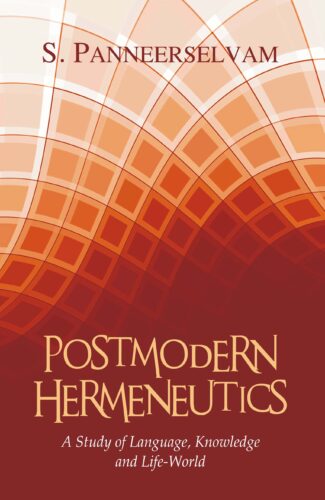
The book attempts to apply postmodern hermeneutics in the study of language, i.e. the theory of meaning and interpretation of the life-world in human knowledge and understanding. Four types of hermeneutics – philosophical,radical, critical and deconstructive – are discussed and analysed under postmodern hermeneutics.
In the background of structuralism, poststructuralism and postmodernism, contemporary philosophy has taken a new turn. These three important movements gave rise to new social theories, which influenced the literary and cultural criticism, the new concept of writing, theory and discourse. Postmodern hermeneutics examines the significance of language, text and their interrelation in the context of the above theories.
The book is an attempt to apply postmodern hermeneutics in the study of language, i.e. the theory of meaning and interpretation of the life-world in human knowledge and understanding. Four types of hermeneutics such as, philosophical hermeneutics (Gadamer), radical hermeneutics (Ricoeur), critical hermeneutics (Habermas) and deconstructive hermeneutics (Derrida) are discussed and analysed under postmodern hermeneutics. All the above thinkers have been influenced and at the same time critiqued the contributions made by the great phenomenological masters like Edmund Husserl and Martin Heidegger. Postmodernism gives a new way of understanding hermeneutics by rejecting metanarratives, thus creating a new type of discourse, which was not hitherto seen or examined by previous forms of philosophizing.
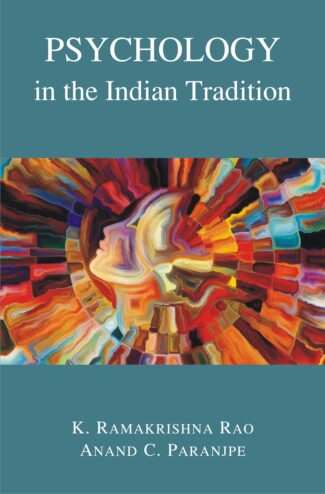
This authoritative volume draws the contours of Indian psychology, describes the methods of study, defines the critical concepts, explains the central ideas, and discusses their implications to psychological study and application to life.
Professors Ramakrishna Rao and Anand Paranjpe are two distinguished psychologist-philosophers who pioneered what has come to be known as Indian psychology. In this authoritative volume, they draw the contours of Indian psychology, describe the methods of study, define the critical concepts, explain the central ideas, and discuss their implications to psychological study and application to life.
The main theme is organized around the theme that psychology is the study of the person. They go on to present a model of the person as a unique composite of body, mind, and consciousness. Consciousness is conceived to be qualitatively and ontologically different from all material forms. The goal of the person is self-realization, which consists in the realization of the true self as distinct and separate from the manifest ego. It is facilitated by cultivating consciousness, which leads to some kind of psycho-spiritual symbiosis, personal transformation, and flowering of ones hidden human potentials.

This authoritative volume draws the contours of Indian psychology, describes the methods of study, defines the critical concepts, explains the central ideas, and discusses their implications to psychological study and application to life.
Professors Ramakrishna Rao and Anand Paranjpe are two distinguished psychologist-philosophers who pioneered what has come to be known as Indian psychology. In this authoritative volume, they draw the contours of Indian psychology, describe the methods of study, define the critical concepts, explain the central ideas, and discuss their implications to psychological study and application to life.
The main theme is organized around the theme that psychology is the study of the person. They go on to present a model of the person as a unique composite of body, mind, and consciousness. Consciousness is conceived to be qualitatively and ontologically different from all material forms. The goal of the person is self-realization, which consists in the realization of the true self as distinct and separate from the manifest ego. It is facilitated by cultivating consciousness, which leads to some kind of psycho-spiritual symbiosis, personal transformation, and flowering of ones hidden human potentials.
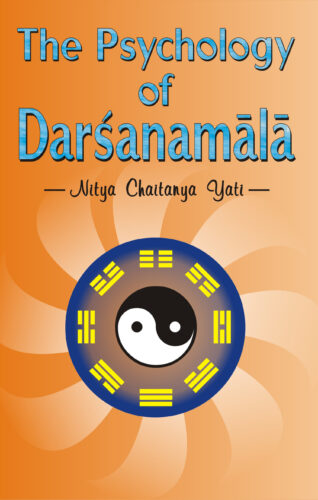
The Darsanmala, consisting 100 verses lucidly expresses Narayana Gurus unitive vision in expounding the core of Vedantic wisdom. Here, Guru Nitya, masterfully examines this wisdom from the psychological point of view to address basic questions of human psychology like how does one experience the world, the link between I, the experiencer, and that which is experienced, etc.
The Darshanmala, one of the last major works of Narayana Guru, contains 100 verses lucidly expressing the guru’s unitive vision expounding the core of Vedantic wisdom. Here, Guru Nitya Chaitanya Yati, using his deep scholarship in western psychological thought, masterfully examines this wisdom from the psychological point of view to address basic questions of human psychology like how does one experience the world, the link between I, the experiencer, and that which is experienced and the way in which one can guide one’s actions. Referring to western thinkers including Carl Jung, St John of the Cross and Kierkegaard, Guru Nitya Chaitanya Yati explores Narayana Guru’s absolutist vision to present insights into such items as consciousness, illusion, yoga, existence, awareness, consciousness and contemplative devotion and liberation. Referring to the thought and philosophy of Greek and other western philosophers and ancient scriptures on Advaitic philosophy, the commentary, simple in language and easy-to-understand, incorporates the perspectives and vision derived from the author’s guru, Nataraja Guru, who had translated the entire poem Darshanmala into English.
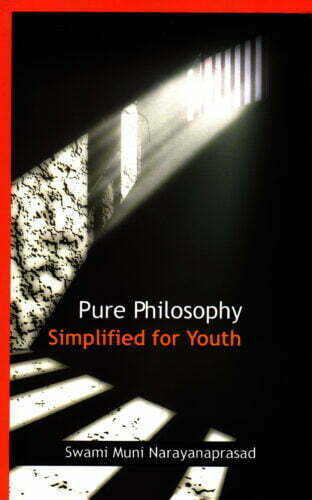
A textbook meant for the youths, throws light on the problems and principles of virtuous life of a man. It talks about one’s existence, birth and death, some guidelines towards a virtuous life, self-restraint, right understanding, action, living, etc. Also speaks about some moral instructions, goal of life, religion and prayer, etc.
This small book was originally meant to be a textbook on Philosophy, to be used in undergraduate studies in all Indian universities, if made a compulsary subject. The compelling necessity of doing so is made clear in the Introduction. Even otherwise, all the educated youth will find this book useful as a guide in life. Fully grown-ups and even elders will find it beneficial to lead themselves and their children.
The first five chapters answer all the fundamental problems of life based simply on our common sense and love of truth. The next five chapters teach us how to live in the light of this understanding. The latter half also contains some of the universally acceptable moral teachings culled from world religions.

Examining the relation between religion and ecological concern in Hinduism, the book covers aspects like the ecological implications of pilgrimage, worship of earth and river goddesses, and Vedanta and Tantra theologies. It discusses how traditional ideas affect contemporary Indian thought.
Examining the relation between religion and ecological concern in Hinduism from textual, theological, anthropological, feminist, and eco-activist approaches, this volume brings together an international, interdisciplinary group of scholars. The book covers the most relevant aspects of the Hindu tradition, searching out the ecological implications of pilgrimage and sacred geography, earth and river goddesses, the beliefs and ritual practice of villagers, caste consciousness and Vedanta, Tantra, and Goddess theologies. The book considers, in a thoughtful and analytical way, a timely issue: how important and basic traditional ideas like asceticism, karma and rebirth, and purity and impurity influence contemporary Indian thinking about the environment. It has an impressive and diverse array of contributors, and there is a nice balance of theory and fieldwork. It shows well how India is sacred ground (and water).
The founding fathers of the quantum revolution were deeply invested in questions of meaning. Distanced from theology but also from the deterministic objective Materialism of the classical model of physics, several of them, including Bohr, Heisenberg, Pauli, Schrödinger and Bohm looked to Eastern philosophies for explanations. This search for meaning beyond church and clockwork seems to have stagnated in our times. Yet, recent advances in physics and the reinterpretation of historic experiments have given us new ways to understand and ask fundamental philosophical questions. These approaches include further considerations of the Copenhagen Interpretation of Bohr, Heisenberg and others, the Transactional Interpretation of John G. Cramer and Ruth Krastner, Quantum Bayesianism (QBism) of Fuchs, Schack and David Mermin; questions related to the meaning of observation and measurement; the Orthodox view of quantum mechanics; collapse of the wave function and time and quantum field theory. The present volume brings together a number of these approaches discussed by leading contemporary physicists. It also expands the consideration of the quantum revolution to include its larger implications for philosophy, mathematics, biology and global understanding, reopening the questions of consciousness and meaning which occupied the minds of the early thinkers of Quantum Mechanics.
| There are no products |